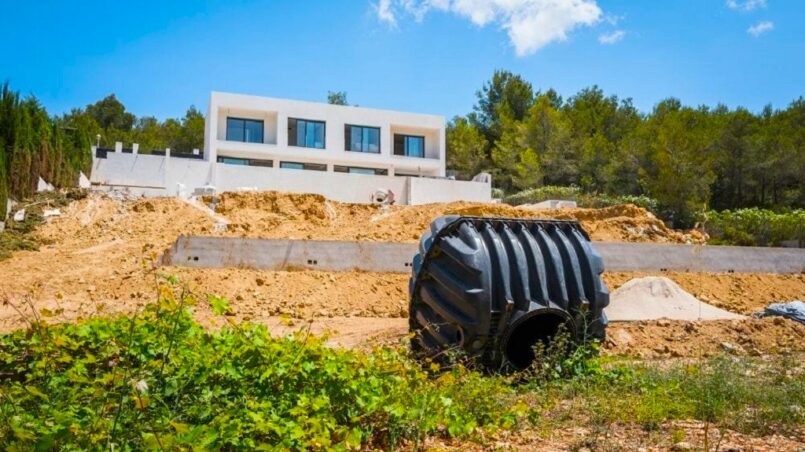A septic system may treat your wastewater if you live in a rural area without a municipal sewer system. These systems comprise two parts: the tank and the drain field.
Liquid effluent leaves the septic tank and flows into a drain field. This network of gravel trenches with perforated pipes is buried in the soil filters and treats wastewater before it seeps into groundwater.
The Tank
A sizable underground container made of concrete, fiberglass, or plastic called a septic tank separates solid waste from wastewater. Generally, it is designed with two compartments with manhole-like covers for access. The first compartment allows solids to settle and digest, while the second compartment filters scum and liquid from sewage before it flows into the drain fields.
As waste enters the septic tank, heavier solids sink to form a sludge layer at the bottom while grease and other lighter substances float to the top. The resulting wastewater liquid in the middle is known as effluent.
Upon leaving the septic tank, wastewater enters the drain field through lateral lines. These long pieces of tubing are perforated with holes and are placed under a layer of gravel and native soil. Once in the drain field, soil microbes naturally remediate the sewage before it seeps into groundwater or surface water.
The Drain Field
As solids are removed through settling and bacterial digestion in your septic tank, the liquid sewage, known as effluent, is conveyed to the drain field. Sometimes referred to as a leach field, it’s a network of trenches with perforated pipes buried below the ground surface.
Once there, the sewage is slowly absorbed into the soil, filtered, and treated. It helps protect underground water sources from contamination by disease organisms.
Keeping the drain field healthy requires monitoring and regular maintenance. Leaking faucets, clogged toilets, and flushing things you shouldn’t overload the system, causing signs such as odor, gurgling toilets, backed-up sinks, and overflowing drains. Limiting water usage can help ease the load on your septic system, as can using low-flush toilets and other water conservation measures. Also, avoid driving or parking vehicles over the drain field, as excess weight can crush the pipes beneath.
The Biomat
Everything that goes down your drain leaves the house through one central drain that runs into your septic tank. From there, the wastewater is discharged into a drain field, a porous layer of soil that filters and treats the liquid waste before it enters groundwater.
As the wastewater flows through the lateral lines and seeps into the drain field, it passes through a black jelly-like substance called biomass. The microbes in the biomass reduce pathogens, biological solids, and other harmful matter to an acceptable level before it is released into the soil.
Unfortunately, suppose the septic system needs to be better designed and maintained, or the soil type needs to be corrected for the new septic tanks system design. In that case, the biomass will grow too quickly, causing a buildup in system clogs. To avoid this, be sure to use only the toilets and sinks designed for your septic system, avoid flushing things that deplete the bacteria in the septic tank, such as paper towels, facial tissue, or bleach, and hire a professional to conduct regular inspections of the septic system and drain fields.
The Pump
Most septic systems are gravity-fed, and liquid waste (effluent) exits the tank through a pipe. The wastewater travels into the drain field, a network of perforated pipes in gravel trenches buried beneath the soil.
As the liquid effluent flows from your house into the septic system, it encounters and separates solid waste in the tank. The sludge layer sinks to the bottom of the tank, while the oil and grease float to the top as scum. Compartments and a T-shaped outlet prevent sludge and scum from leaving the tank while allowing the liquid to exit as wastewater or effluent.
The septic system must be pumped regularly to keep it functioning correctly. When a homeowner hires a licensed O&M specialist for this task, it’s also a great time to evaluate the entire septic system and make any necessary repairs. In addition, it’s essential to minimize foot traffic over the drain field to reduce the damage risk and avoid soil contamination.














